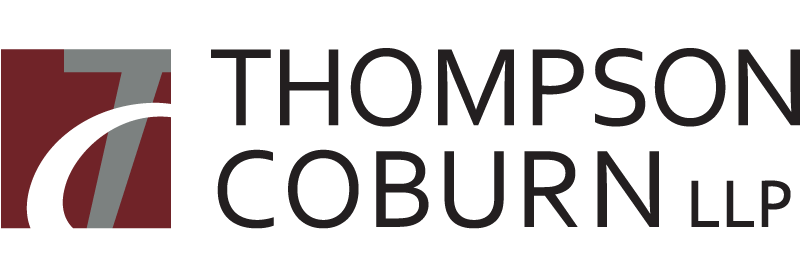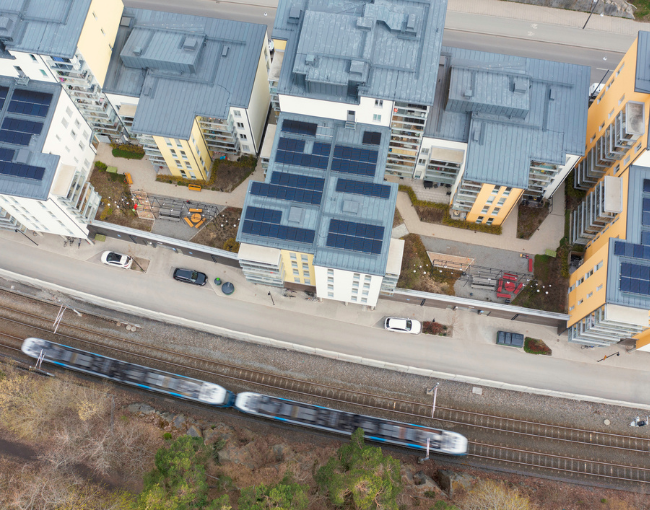Home > Insights > Publications > Federal Push Brings More Incentives for Housing Development Near Public Transportation
Amid continued uncertainty surrounding interest rates, property taxes and increased regulatory burdens, many in the real estate industry are looking for advantageous financing opportunities. Notably, developers have been considering government incentives to help offset some of these costs while continuing to build and improve America’s cities. As a follow-up to our overview of new federal resources for supercharging office to residential conversion, this post discusses how these incentives could have practical benefits. We will summarize the eligibility requirements and benefits of two federal incentive programs related to transportation and transportation infrastructure – the Railroad Rehabilitation & Improvement Financing (RRIF) program and the Transportation Infrastructure Finance and Innovation Act (TIFIA).
With over $35 billion in lending capacity at below-market interest rates, the TIFIA and RRIF programs facilitate housing development near public transportation, including conversion projects. As part of a large-scale White House effort to spur office to residential conversion, the Department of Transportation (DOT) is taking steps to promote transit-oriented development and affordable housing through new guidance on these programs released in October 2023.
The DOT's policy statement outlines principles for pursuing transportation projects with the dual objectives of increasing affordable housing supply and reducing emissions. By offering low-cost financing for conversions and housing projects near public transportation, this guidance aims to boost housing supply and incentivize state and local governments to enhance zoning, land use, and transit-oriented development policies. Additionally, the DOT's streamlined approach enables transit agencies to repurpose properties for affordable housing projects, potentially transforming surplus transit properties into valuable assets for housing options at below market prices. Transit-oriented development (TOD) projects are eligible under the RRIF and TIFIA credit programs.
RRIF TOD
Per DOT’s guidance, an eligible purpose for RRIF loans is to “finance economic development, including commercial and residential development, and related infrastructure and activities.” To qualify, the TOD projects must satisfy four criteria. First, total financing must incorporate private investment in excess of 20 percent of the total project costs. Second, geographically, the projects should be physically connected to or situated within half a mile of designated transportation hubs like fixed guideway transit, intercity bus, passenger rail, or multimodal stations with railroad service. Third, applicants must exhibit the capability to initiate construction contracting within 90 days of the loan obligation. Finally, TOD projects must demonstrate their potential to generate new revenue for relevant passenger rail stations or services, surpassing associated costs. RRIF TOD projects must be economic development and meet all four statutory requirements to be eligible.
Eligible projects extend beyond commercial and residential developments, encompassing various land uses permitted under local law, including, among others, office, institutional (e.g. civic, academic, health, etc.), industrial, entertainment, and recreational uses. DOT’s guidance encourages applicants to propose projects that drive transformative improvements, such as increasing housing options, prioritizing safety for pedestrians and non-motorized mobility, enhancing access to essential services, and improving environmental quality. The DOT’s examples include partnerships between private developers and local rail agencies to create economic development projects, constructing new buildings, or improving existing rail stations. This flexible definition encompasses a diverse range of projects. For example, The Port of Everett in Everett, Washington, used RRIF financing in a two-phase project. The project involved upgrades to terminal rail facilities and the relocation of a warehouse. The RRIF direct loan supported the construction of approximately 3,300 feet of on-terminal working track, involving demolition, excavation, utility realignment, track construction, and the relocation of a 39,000-square-foot warehouse to serve as a rail cargo cover within the port's facilities.
TIFIA TOD
Projects eligible for TIFIA loans encompass two distinct categories. First, eligible projects involve the improvement or construction of public infrastructure within walking distance of fixed guideway transit facilities, passenger rail stations, intercity bus stations, or intermodal facilities, including various transportation, public utility, or capital projects. The second category pertains to projects focused on economic development, covering commercial and residential development and related infrastructure and activities. For this category to qualify, the project must incorporate private investment, be physically or functionally linked to a passenger rail or multimodal station with rail service, exhibit a high probability of commencing construction within 90 days of TIFIA credit assistance, and have a high likelihood of reducing the need for financial assistance from other federal programs related to the relevant passenger rail station or service by generating revenue exceeding costs.
In essence, TIFIA TOD projects must align with public infrastructure improvement or economic development objectives and meet specified statutory eligibility criteria to qualify for TIFIA loans. In Denver, Colorado, the Denver Union Station project used over $145 million in TIFIA loans. The project was a public-private development spanning around 50 acres in downtown Denver. It involved the redevelopment of the site into an intermodal transit district with a mix of residential, retail, and office spaces, connected to regional multimodal transportation services, including commuter rail, light rail, bus rapid transit, and regular bus services.
The flexible and inclusive criteria for TIFIA and RRIF TOD projects allow the DOT to harness the creativity of the private sector while directly improving public infrastructure and connectivity. The programs empower transit agencies and private real estate developers to repurpose surplus properties for affordable housing, promoting community-centric development and integrating transportation and housing for a sustainable future. However, accessing these funds requires more than just deciphering the word salad of acronyms put forth by the DOT. The real estate team at Thompson Coburn is here to help.

